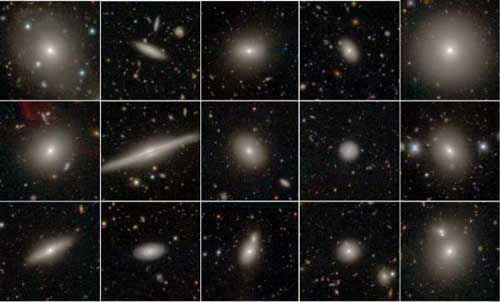| Sep 11, 2017 |
Astronomers spun up by galaxy-shape finding
|
|
(Nanowerk News) For the first time astronomers have measured how a galaxy's spin affects its shape.
|
|
It sounds simple, but measuring a galaxy's true 3D shape is a tricky problem that astronomers first tried to solve 90 years ago.
|
|
"This is the first time we've been able to reliably measure how a galaxy's shape depends on any of its other properties - in this case, its rotation speed," said research team leader Dr Caroline Foster of the University of Sydney, who completed this research while working at the Australian Astronomical Observatory.
|
|
The study is published today in the journal Monthly Notices of the Royal Astronomical Society ("The SAMI Galaxy Survey: the intrinsic shape of kinematically selected galaxies").
|
 |
| These are galaxies from the SAMI survey, imaged with Japan's Subaru telescope. (Image: D. Taranu (University of Western Australia), C. Foster (University of Sydney), NAOJ (the National Astronomical Observatory of Japan)) (click on image to enlarge)
|
|
Galaxies can be shaped like a pancake, a sea urchin or a football, or anything in between.
|
|
Faster-spinning galaxies are flatter than their slower-spinning siblings, the team found.
|
|
"And among spiral galaxies, which have disks of stars, the faster-spinning ones have more circular disks," said team member Professor Scott Croom of the University of Sydney.
|
|
The team made its findings with SAMI (the Sydney-AAO Multi-object Integral field unit), an instrument jointly developed by The University of Sydney and the Australian Astronomical Observatory with funding from CAASTRO, the ARC Centre of Excellence for All-sky Astrophysics.
|
|
SAMI gives detailed information about the movement of gas and stars inside galaxies. It can examine 13 galaxies at a time and so collect data on huge numbers of them.
|
|
Dr Foster's team used a sample of 845 galaxies, over three times more than the biggest previous study. This large number was the key to solving the shape problem.
|
|
Because a galaxy's shape is the result of past events such as merging with other galaxies, knowing its shape also tells us about the galaxy's history.
|

